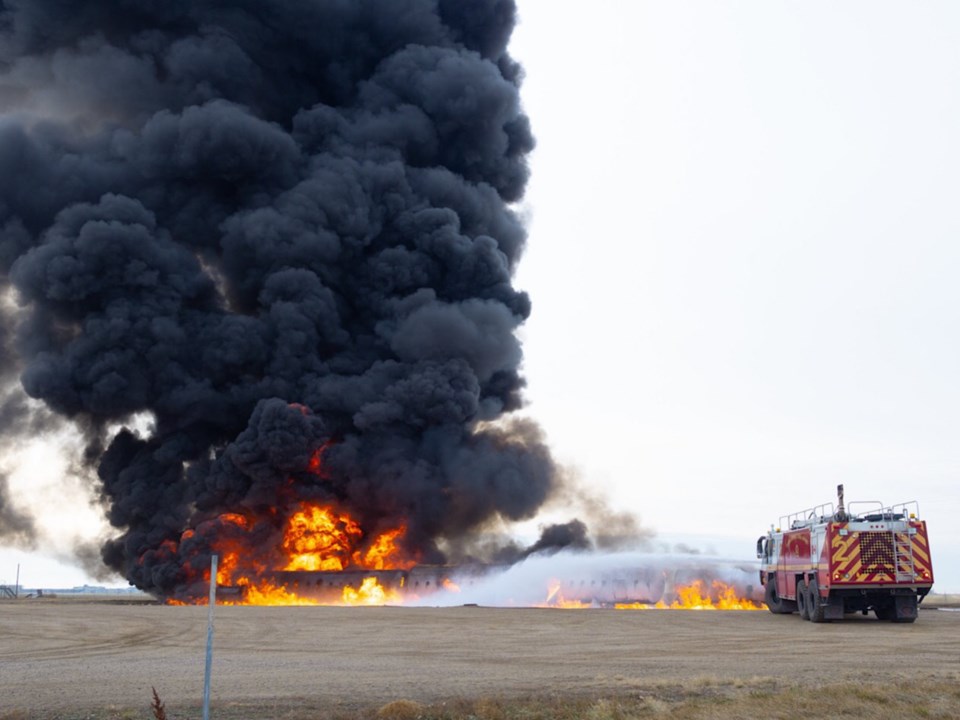REGINA — Local residents shouldn’t be alarmed if they witnessed what looked like a plane crash scene at Regina International Airport Tuesday.
Instead, Regina Airport Authority and its partners had hosted a full scale emergency exercise at the airport during the morning hours.
It was an elaborate effort involving about 150 people, all designed to test the emergency response at the airport.
Large plumes of smoke were seen near the main runway, with emergency responders on the scene and a number of actors in full makeup portraying passengers in distress.
James Bogusz, president and CEO of Regina Airport Authority, said the exercise is something required by Transport Canada, which mandates internationally designated airports must test their emergency response plan with a full-scale exercise every two years.
“This is an increase from the past where we used to do it every four years,” said Bogusz. The idea is for the airport to be able to maintain their international designation, which was restored by the federal government earlier this year following the COVID-19 pandemic.
This exercise was simulated as an international aircraft, which allowed the airport to involve the Canada Customs and Border Services Agency. Other partner agencies involved in the simulation were Regina Fire, Regina Police, the city of Regina, Public Safety Canada, NAV Canada, Saskatchewan ERS and airport staff and volunteers, as well as the airlines.
At the airport on Tuesday, said Bogusz, “we lit a fire, about 2,500 litres of fuel burned, and it basically simulates something for our on-scene firefighters to come out and put out.”
It allowed their partners to practice putting a fire out as well as rescue techniques, including doing triage with their EMS partners. It also allowed them to practise communications.
“Communications is usually the first thing that can break down during these types of events. And getting a routine where these emergency responders can practise outside of a table top, getting the real thing, you just can’t beat it.”
As part of the simulation, the airport activated its Emergency Operations Centre along with all of the on-field emergency services. The idea was for a real-life simulation for all participants involved so that everyone is ready if a real incident happens at the airport.
“Hopefully, we’ll never have a major event here in terms of a large scale plane crash, but I can certainly rest assured if there were to, these types of practices go a long way if the real thing ever happens here,” said Bogusz.





